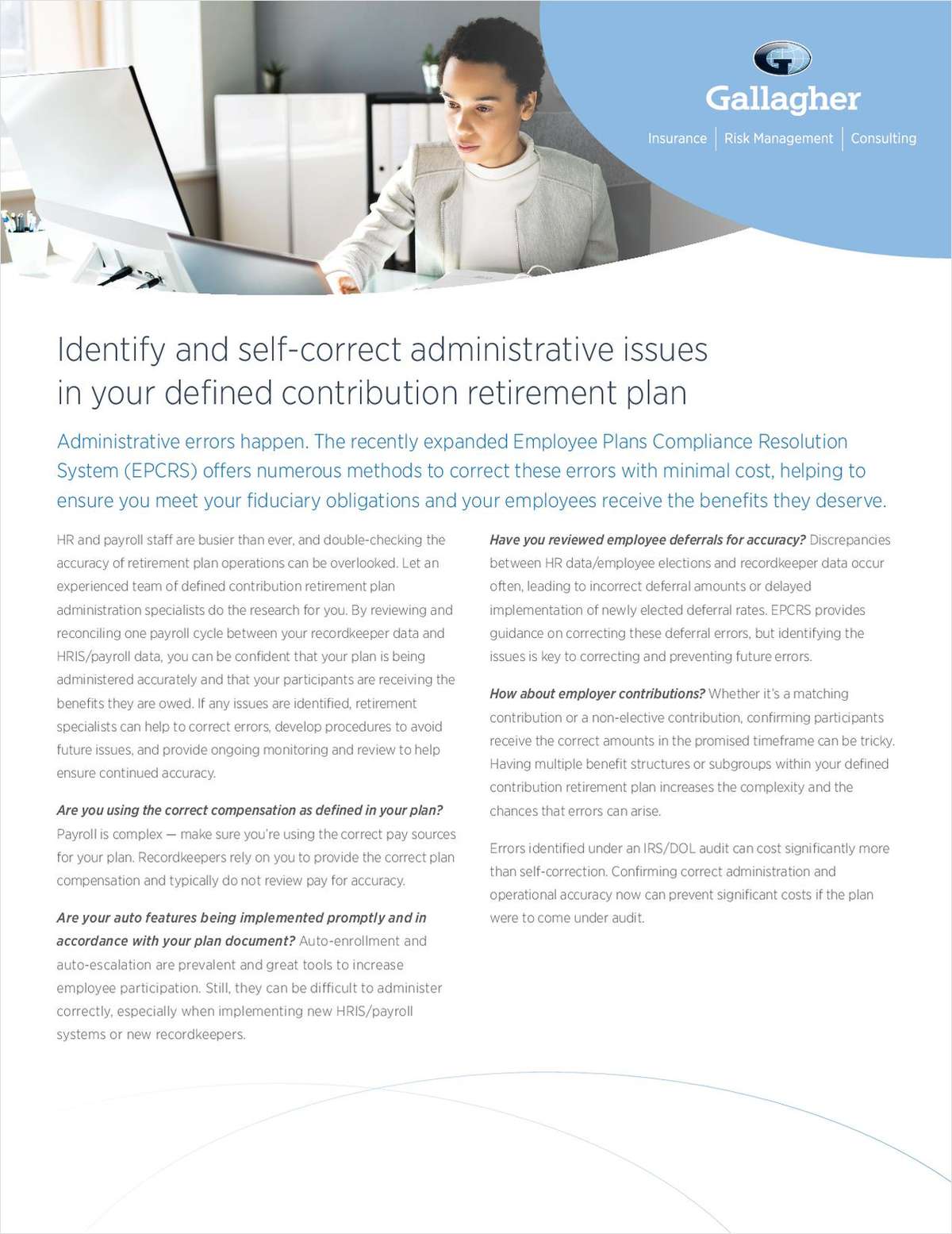 Employers want their employees to find a path to a successful retirement; it makes them better employees today while also providing a great referral to future employees. Brokers can help. (Photo: Shutterstock)
Employers want their employees to find a path to a successful retirement; it makes them better employees today while also providing a great referral to future employees. Brokers can help. (Photo: Shutterstock)
Baby Boomers (those born between 1946 and 1964) represent close to 75 million people in the United States today. They have been the largest generation for a very long time, with millennials just now set to outnumber them in 2019. The difference between these two groups is that one of them is just beginning their careers while the other is retiring or heading toward retirement.
Did you know that close to 10,000 baby boomers hit age 65 every day? And what is alarming is that the median retirement savings of this group is just under $180,000, for those that do have retirement savings — 45% of this population claim to have zero savings for retirement, yet they control over 70% of the country's disposable income.
Given an aging population with little savings, challenges in the Social Security system and a health care epidemic in terms of costs and access, we face a potential crisis. What can be done to minimize it? The most likely scenario is that we will be faced with the need to change – at the consumer, family, employer and government/support levels.
|Changes to the family unit
Given the gap between savings and lifestyles, many baby boomers will be forced to change their habits, through cost-cutting, downsizing, curtailment in spending and increased borrowing. The resources to do otherwise simply won't exist. Families will be called upon to support their parents for everyday needs. Multi-generation housing relationships will increase. Transportation will move towards sharing arrangements.
That might not be such a bad thing given the state of affairs. More tightly knit and deeply dependent family relationships could be a rich benefit to a country splintered in various ways. However, it would be more beneficial if we elected this path and were not forced into a new way of life out of necessity.
|Changes within the workplace
Changes are already happening within the employer/employee relationship. Employers are recognizing that this generation is the most informed and knowledgeable group relative to their businesses, and given the economic challenges, many are choosing semi or sponsored retirement relationships.
In this situation, employers engage a certain group of employees for part-time support and service at discounted costs. The employers get a valuable and knowledgeable workforce at discounted rates, while the employees get much needed financial and psychological support as they enter their retirement years.
It should not come as a surprise that one of the biggest challenges of retirement is not financial, but psychological. Relaxing with little resources and no purpose can be a daunting, if not overwhelming, emotional experience. This mutually beneficial relationship may be a good solution for both employers and employees.
|Employers
But (there's always a but), this also presents an opportunity for employers and benefits brokers to assist by providing necessary services to this group with an incredibly high disposable income. One way is to implement a financial wellness program.
The purpose of these low-cost benefit programs is to educate and teach employees how to better plan, save, spend and borrow throughout their careers, including the critical years just before retirement. Taking steps now may be their last chance to ensure a livable retirement.
Employers want their employees to find a path to a successful retirement; it makes them better employees today while also providing a great referral to future employees. Employees want to join an organization that takes care of their team members (if that doesn't scream millennial, I don't know what does!).
|Brokers
Brokers now can service the needs of employers (think health care, retirement plans, other voluntary benefits) as well as service and manage the needs of individual consumers as well. These employees are earning 70% of the disposable income in the United States today, and they desperately need financial services. A properly constructed financial wellness program ensures that these employees are presented with appropriate opportunities to secure a more prosperous future.
Brokers are in the unique position to benefit by establishing these employer-based relationships. Employees get the help and motivation they need to invest in their future; employers get more productive and stable employees; brokers get to capitalize on the relationships by being in the exclusive position to offer various financial services through this engaged environment.
Perhaps this large populous of voters will create legislative change that will increase Social Security or other government support, perhaps at the cost of the existing workforce, but that will not be a sustainable solution unless coupled with a knowledgeable workforce actively engaged in planning and participating in their future financial stability.
Employers and brokers have a great opportunity to offer financial wellness tools and solutions to support a sustainable path to retirement, while benefiting from these new offerings.
David Kilby has been president of FinFit since it was founded in 2008. He has grown the company from a single idea into the nation's leading Financial Wellness Benefit platform. Prior to FinFit, David led a multimillion dollar financial holding company where he was inspired to find ways to help employees improve their financial health. At KPMG Peat Marwick, he worked with a diverse group of public and private organizations in a variety of industries including automotive, chemical manufacturing, consumer finance, managed health care, retail, real estate and wholesale organizations. David received his CPA designation in the Commonwealth of Virginia in 1991 and graduated from Old Dominion University.
Complete your profile to continue reading and get FREE access to BenefitsPRO, part of your ALM digital membership.
Your access to unlimited BenefitsPRO content isn’t changing.
Once you are an ALM digital member, you’ll receive:
- Breaking benefits news and analysis, on-site and via our newsletters and custom alerts
- Educational webcasts, white papers, and ebooks from industry thought leaders
- Critical converage of the property casualty insurance and financial advisory markets on our other ALM sites, PropertyCasualty360 and ThinkAdvisor
Already have an account? Sign In Now
© 2025 ALM Global, LLC, All Rights Reserved. Request academic re-use from www.copyright.com. All other uses, submit a request to [email protected]. For more information visit Asset & Logo Licensing.








